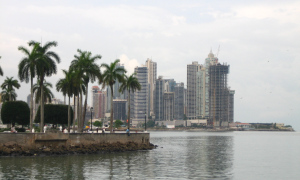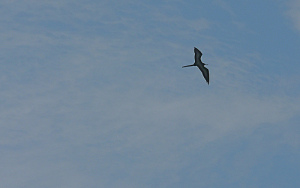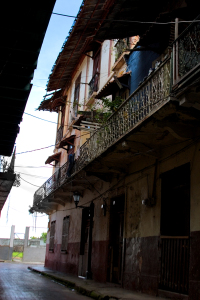I recently had the opportunity to interview Sylvain Duford, who is currently building a house in Altos del Maria, Panama, and is chronicling his adventure in his blog,Sylvain’s Panama Adventure. According to his blog, Mr. Duford is a former Canadian Airforce pilot, and is currently a software engineer. He began writing about his experiences building a house in Panama on his blog in February of 2026.
PREI: Why did you choose Panama as a location to build a second home, and how did you decide on the specific region or location?
SD: We heard about from a friend who bought a lot in Bocas del Toro and after researching it, we found out that the combination of infrastructure, health care, safety, low cost of living, climate and favourable tax treatment was pretty much unbeatable. We like to live in the country and we don’t like heat, so building in the mountains made sense for us. Additionally, Altos del Maria is safe, 30 minutes from Gorgona beach, and 1.5 hour from the city, so it was a great combination for us.
PREI: What made you decide on building the home yourself, rather than investing in an existing piece of real estate in Panama?
SD: We didn’t find anything we really liked, plus we had some ideas about our very own piece of tropical paradise.
PREI: As your home is still under construction, what have been the most difficult obstacles in planning and building your home as of yet? What have been the most rewarding aspects?
SD: Finding and selecting nätcasino a trustworthy architect and a builder were the most stressful and difficult aspects. You pretty much have to go with someone that has a proven track record and is recommended by one or more persons you trust. Building in any country is a lot of work and trouble and you pretty much have to be there all the time. Doing so in a far-away third-world country makes it even more challenging since we can’t be there all the time. Luckily we found a trusted third party to watch over the construction for us. Seeing our embryonic ideas become a sophisticated design and then slowly become reality has been very rewarding.
PREI: Reading your blog I can see that you are interested in the outdoors, and are a self described environmentalist. Have these interests impacted your decisions in undertaking this project as far as location, design, or building materials, etc?
SD: Yes our lot selection and house design have kept in mind the need to minimize our energy consumption and allow us to easily implement green energy and rain-water conservation once we are established there.
PREI: What additional advice would you give to anyone interested in buying or building either a primary residence or second home in Panama?
SD: I would say that you need to arm yourself with a lot of patience and give yourself at least two years for the whole project from lot selection to end of construction. You also need to select the people you work with very carefully and be ready for things to go a lot slower than you expected. But in the end, it’s all worth it.
PREI: Thank you very much for your time, and I wish you luck with your building project!
To read more about Sylvain Duford’s experiences building a home in Panama, please visit his blog.
 Panama was one of seven Latin American countries to see transparency improve in real estate markets over the past two years, according to Jones Lange LaSalle Real Estate Transparency Index. LaSalle is known to have multiple offices around the world, including Philadelphia, Manila,
Panama was one of seven Latin American countries to see transparency improve in real estate markets over the past two years, according to Jones Lange LaSalle Real Estate Transparency Index. LaSalle is known to have multiple offices around the world, including Philadelphia, Manila,  A new luxury eco-resort, Emerald Monkey, is scheduled to break ground in Bocas Del Toro this month, for completion in 2026. The resort, billed as the first zero-carbon luxury resort in the world, will feature 1, 2 and 3 bedroom villas with private plunge pools and garden terraces. According to the developments website, the resort will be receive electricity exclusively from hydroelectric dams, will utilize chlorine free natural saltwater pools, and will obtain drinking water from local springs. The resort will also operate an organic farm on the premises, and will feature a market with locally grown and organically produced produce and fruit.
A new luxury eco-resort, Emerald Monkey, is scheduled to break ground in Bocas Del Toro this month, for completion in 2026. The resort, billed as the first zero-carbon luxury resort in the world, will feature 1, 2 and 3 bedroom villas with private plunge pools and garden terraces. According to the developments website, the resort will be receive electricity exclusively from hydroelectric dams, will utilize chlorine free natural saltwater pools, and will obtain drinking water from local springs. The resort will also operate an organic farm on the premises, and will feature a market with locally grown and organically produced produce and fruit. Panama City’s Casco Viejo neighborhood is receiving more praise as Panama City’s hottest neighborhood and was called “a cultural cornerstone” rivaling Miami’s South Beach in the New York Times. Panama City’s up-and-coming historic neighborhood has attracted the attention of international media outlets. Last month Casco Vieio was featured in an
Panama City’s Casco Viejo neighborhood is receiving more praise as Panama City’s hottest neighborhood and was called “a cultural cornerstone” rivaling Miami’s South Beach in the New York Times. Panama City’s up-and-coming historic neighborhood has attracted the attention of international media outlets. Last month Casco Vieio was featured in an